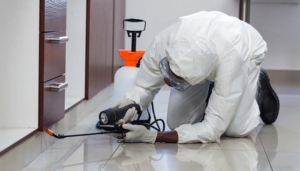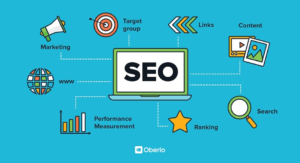Pest management reduces pests to levels that no longer cause unacceptable damage. Monitoring, scouting, and accurately identifying both the pest and host are keys to making control decisions.
Prevention is always the preferred method, but a treatment strategy can be implemented when necessary. Treatment options include cultural, biological, and chemical controls. Click https://armispestmanagement.com/ to learn more.

NMSU integrated pest management (IPM) strategies focus on preventing pest problems rather than controlling them once they occur. Pest prevention starts with selecting plants that are well adapted to the local climate and soil conditions. When planting, follow good gardening practices to provide the proper amounts of water and nutrients. Monitor new plantings to ensure that the plants are thriving, and take note of any abnormalities that may indicate a problem.
Many plant-eating insects are directly affected by weather conditions, especially temperature and day length. Rain, freezing temperatures, drought and other weather changes can kill or suppress a pest population, or cause it to spread rapidly. The number of weeds can also be affected by weather, affecting the amount of sunlight they receive and the availability of water.
The environment is also home to predators, parasitoids and pathogens that control or destroy pest populations. Birds, reptiles, amphibians, fish and mammals often prey on insect pests, and fungi and bacteria attack and kill or suppress plant diseases. These natural enemies and other environmental factors help to control pests on a broad scale and are known as biological controls.
In addition to these natural forces, topography and geography restrict the spread of pests. Features like mountains and bodies of water limit the growth of some pests, and barriers such as fences and rivers can help to deter others. Providing adequate food, shelter, and water supplies also reduces pest infestations.
Pests are undesirable organisms that affect our economy, health, environment or quality of life. They include unwanted insects, nematodes, weeds, plants or vertebrate animals that damage crops, lawns, gardens, homes, trees and shrubs. Even “native” species can become pests if their numbers are excessive or if their actions adversely impact human activities.
Once pests have been detected, it is important to accurately identify the pest and the host plants so that treatment strategies can be developed. Evaluate the extent of pest damage and select a tolerance level, or threshold, below which pest control is economically justifiable. Determine the appropriate pest management method, such as prevention, suppression or eradication.
Suppression
Suppression is the action of reducing pest numbers to an acceptable level. This is usually done through a combination of methods, including preventive and chemical controls.
Suppressing a pest problem is often much cheaper than eradicating it. It also is better for the environment and less harmful to the human population. However, it is important to keep in mind that pest control is not always possible or desirable. Preventive measures should be used as often as possible to avoid pest problems or to limit their damage. Suppression is needed when prevention methods are not effective or are too costly to implement.
Most pests have specific weak points in their life cycle or development that make them easier to control than at other times. These windows of opportunity, whether it is an insect at the egg or larval stage, a weed in its seedling or mature stage, or a disease during an outbreak, should be targeted with control tactics.
Weather conditions directly affect pest populations by killing them or suppressing them through extreme temperatures, rain, and drought. The availability of food, water, shelter, and other environmental factors also affect pest populations. Natural barriers, such as mountains and large bodies of water, restrict the movement of some pests.
Biological methods use predators, parasites, and pathogens to control pests. The key is to find and introduce natural enemies that are adapted to the local species of pest and its habitat, then release them in sufficient numbers to be effective. This requires careful study of the biology of the pest and its potential natural enemies, along with a risk assessment and cost/benefit analysis of the proposed method.
Mechanical or physical controls kill pests or make the environment unsuitable for them by removing them, blocking them, or altering their environment. This includes traps for animals, screens, fences, and other physical barriers. Mulches, steam sterilization of soil, and other techniques can make the growing environment unsuitable for pests.
Chemical methods are generally viewed as the most destructive to the environment, but they can be very effective in controlling pests. The best chemicals are narrow-spectrum, target the pest directly, and have minimal side effects. Some of these include nerve toxins, plant growth regulators, and inhibiters, and pheromones that disrupt breeding behavior or interfere with mating.
Eradication
In the context of pest management, eradication is the permanent reduction to zero of the worldwide incidence of a specific infectious agent. This means that the agent no longer exists in nature or the laboratory, and intervention measures are no longer required. Examples include the eradication of smallpox.
Many pests can be managed or eliminated without the use of chemicals. For example, ants and termites can be controlled by ensuring that cracks in walls and foundation are filled; the entrance to crawl spaces is blocked; and garbage is regularly removed from the house and disposed of in tightly sealed containers. Also, regular inspection of food, storage areas, and clothing for signs of insects, rodents, and weeds can help prevent them from gaining a foothold.
If prevention and suppression methods fail to control a pest population, it may be necessary to take more drastic measures. This can include introducing predators or parasites, using more targeted spraying, releasing sterile insect males, or utilizing pheromones and juvenile hormones. These methods should be used only when they can be deemed to offer sufficient benefit over the costs associated with their application.
Eradication is usually only considered a viable option when it is economically justifiable to do so. When the economic costs of eradication exceed the benefits, this option should be abandoned.
Some methods of pest control are highly controversial because they are not only environmentally hazardous but can be dangerous to people and pets as well. For example, chemical spraying can cause respiratory problems and skin irritations. Moreover, it can also be ineffective and can actually lead to increased populations of resistant organisms, such as “superbugs.”
Integrated Pest Management (IPM) is an increasingly popular approach to pest control that involves a combination of biological, cultural, physical/mechanical, and chemical tools in an attempt to reduce risks to human health and the environment. It is a process that should always consider ecological impacts when selecting tools and targets, and should utilize the least-damaging options first.
The words exterminate, extirpate, eradicate and uproot mean the same thing: to effect complete and immediate extinction of something that has established itself. These terms are often used incorrectly in everyday speech, but they should be reserved for situations that require the highest level of safety and environmental responsibility.
Monitoring
A pest is any organism that reduces the availability, quality, or value of a resource that people need or want. Plants, animals, and diseases are all considered pests. Pest control strategies are used to prevent or eliminate the damaging effects of these organisms.
The first step in successful pest management is accurate identification of the organism in question. Pest identification can be done by examining the pest, observing damage or symptoms, and collecting a sample for laboratory examination.
Once the pest is correctly identified, information about its life cycle and environmental factors can be gathered to determine the best pest control methods. The information gathered can help decide whether or not the pest needs to be controlled and when. It can also indicate which management practices will be most effective and how to proceed with these controls.
Threshold levels are established at which enhanced pest control measures will be triggered to avoid unacceptable injury or damage. These thresholds can be based on esthetic, health or economic values. For example, the presence of a single rodent in a food processing facility will prompt action to be taken even though the level of injury might be low. A low level of pest injury can often be tolerated if the cost of control is low.
Monitoring, or scouting, is the practice of checking for pests in an area to determine which pests are present, how many are there and what damage they have caused. This process of observation can be accomplished by hand removal (snapping weeds) or mowing, using attractive traps, or by visual inspection. Monitoring can also include checking for environmental conditions, such as temperature and moisture levels, that might influence pest populations.
Integrated Pest Management (IPM) is a scientific decision-making process that utilizes biological, cultural, physical and chemical tools to manage pests at sustainable levels. It is defined in Federal law (7 U.S.C. 136r) as an approach that “integrates biological, cultural, physical, and chemical tools to maximize management options and minimize human health and ecological risks.” Visit the Office of Pest Management Policy’s page on IPM to learn more. The Federal Integrated Pest Management Coordinating Committee provides leadership and coordination on IPM issues.




